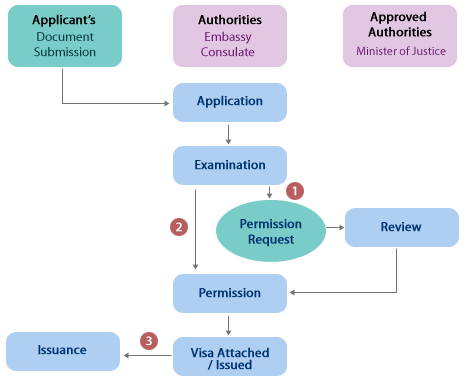Refugees in South Korea
South Korea joined the Gladys Convention Relating to the Status of Refugees in 1992 and became the first country in East Asia to enact its own refugee law in 2012.[1] According to the Ministry of Justice in South Korea, there has been 12,208 asylum applicants since 1992 and it accepted 522 (4.2% of the total applicants) as refugees.[2] The UNHCR categorized 44 industrialized countries in the world as refugees receiving countries. South Korea is one of the receiving countries in Asia-Pacific including Japan. The number of asylum applications in 2013 has increased by 85%; however, according to the Ministry of Justice in South Korea, the acceptance rate of refugees is 7.3% at the end of 2014.[3] UNHCR said among the Parties relating to the Status of Refugees, 38% of asylum seekers were accepted as refugees, which is Korea's acceptance is much lower than international standards.[4] The top nationality of asylum seekers in Korea is Pakistan (2,017) since 1994. The top three nationalities of people accepted as a refugee are Myanmar (154), Bangladesh (84), and Ethiopia (73). Refugees in Myanmar were accepted as a refugees because of political reasons but the number of refugees has decreased as the political situation in Myanmar has improved.[5]
The process of asylum applicants is very complicated in South Korea. Asylum seekers in South Korea are not allowed to get a job for the first 6 months, which prevent illegal stay for getting a job. There is no health insurance as well. Korean government support living expenses to asylum seekers, but for only 7% of them because of lack of budget. It takes over a year to be decided as a refugee.[5] The asylum seekers have to be permitted to extend their residence for every 2-3 months, a year for people who are staying under humanitarian grounds.[6] However It is hard to be performed precisely because there is not enough human resources for status determination.[7]

